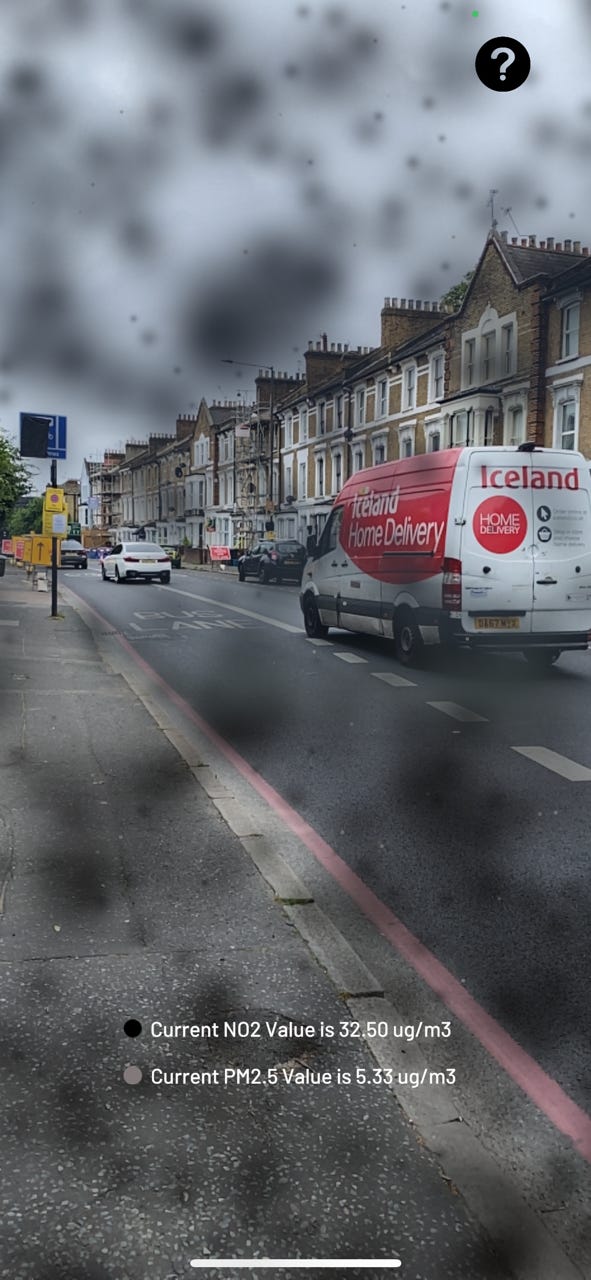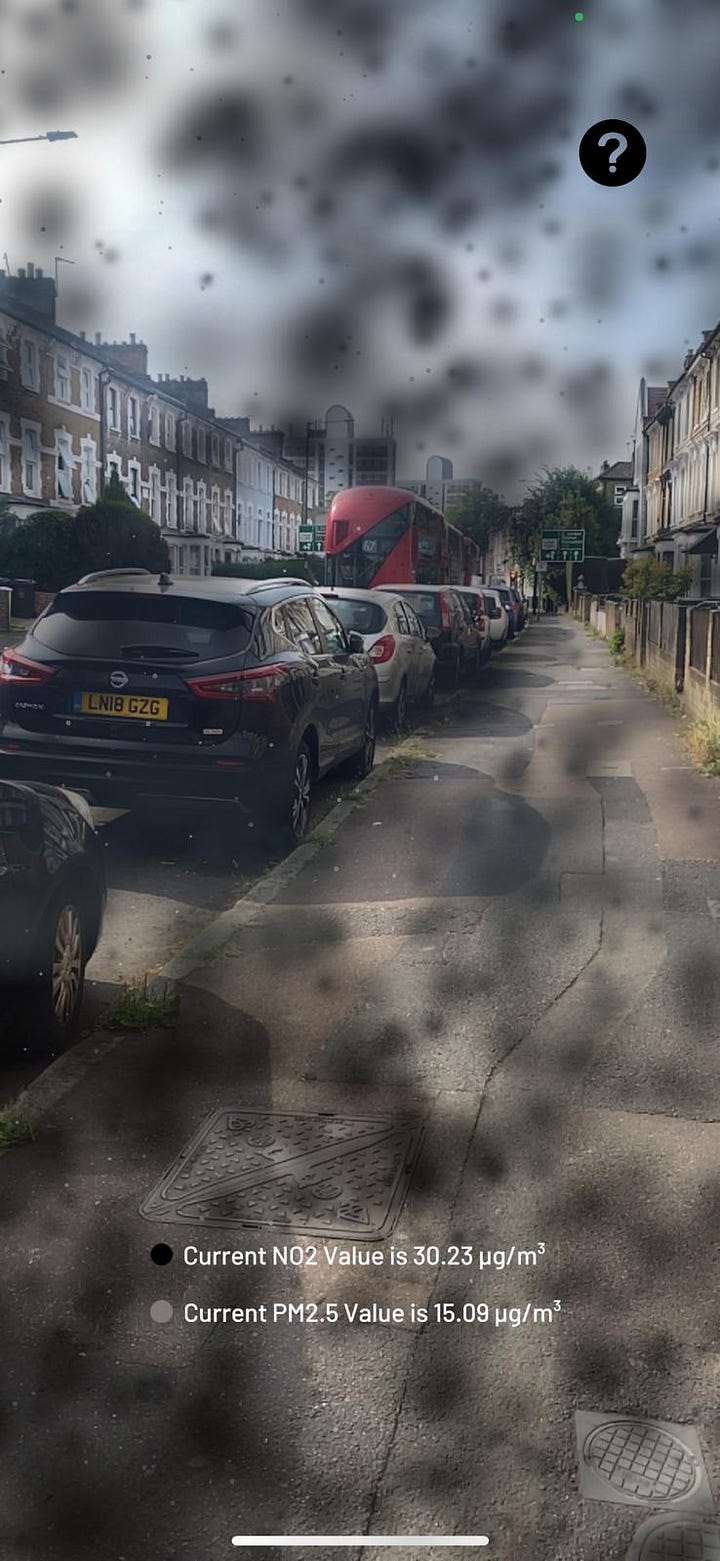This week we are delighted to bring a guest blog from another Breathe London community group - the Rectory Road Residents Association. Over to Marta and Henrietta…
The view from East London
Living on the A10, one of East London's busiest roads, we've always known our air quality was poor. You can smell it during rush hour and feel it when cycling or walking. But proving it to local authorities required hard data, not just complaints.
Rectory Road Residents’ Association won sponsorship from Breathe London to develop an app that can visualise pollution levels from their Breathe London Air Quality node on Rectory Road, live on people's phones.
The AirMeter App shows the immediate and accurate PM2.5 and NO2 (fine particulate matter and nitrogen dioxide) pollution levels using augmented reality - visualising the toxic particles on our road as floating dots on your phone screen. PM2.5 levels are shown as small grey dots and the NO2 levels are shown as bigger grey dots.
This app is a fantastic and simple way to understand the quality of the air we breathe on our street. The live pollution data for the app is taken from our air quality monitor outside Linden Children and Family Hub on Rectory Road, provided by Breathe London and Imperial College London. The app has been created by local creative studio ANRK, with kind support from the Breathe London Programme.
The app's augmented reality feature makes invisible PM2.5 particles and NO2 levels visible on your phone screen. When you see toxic particles floating around your home, the urgency becomes undeniable.
This technology has transformed our advocacy. Instead of saying "the air feels bad," we now show councillors exact pollution levels during morning drop-off times and evening rush hour.
Here is the app, free to download from a phone on the App Store. We are the only road in the UK with a dedicated air quality monitoring app. The android version will be available shortly.
The statistics are stark: over 800 children were hospitalised at our local Homerton Hospital with breathing difficulties in 2023. For us, these aren't numbers – they're our neighbours' children walking to school through polluted air that increases cancer and Alzheimer's risk by up to 20%.
Pollution petition
This is part of our ongoing campaign to raise awareness and create accountability over the air pollution on our road. The Mayor of London Air Pollution and Inequalities latest report clearly states that red route communities are disproportionately affected by air pollution, with cars and vans being the biggest source of toxic chemicals in the air.
Our local councillor Sem Moema has just presented a petition prayer on our behalf to the London Assembly. Armed with this data, we're campaigning for trees being planted on our road to help with air filtering, shading and cooling, especially in summer, when with increasing heatwaves, air pollution is at its worse.


The app has brought our road together giving everyone the knowledge and confidence to discuss our pollution levels and the impact it has on our lives. It has also allowed us to connect with other residents’ associations facing similar challenges, and we look forward to continue the conversation with anyone who’s interested. Anyone interested to discuss how it could work for their community groups (funding dependent) can contact the Association on rectoryrdn16@gmail.com.







You are probably going to find my comment unhelpful, but I am genuinely trying to understand. I once lived in East Sheen directly on the A205. I had just moved to London, moved in with a Uni mate. I then moved to battersea where I lived on the A3021. My biggest hate was the road noise, but maybe I wasn’t really aware of the pollution; your point. Why does one live on an ‘A’ road and then complain about pollution. I guess its a bit like buy a house directly under the Heathrow flight path and then complain to shut it down. I will not have the right date, but A roads come from the 1960’s, they are not new. I often argue Streatham High Road can’t really be A23 London to Brighton and a shopping high-street, it can only be one or the other. I guess should your road be a neighbourhood or an A roads; and assuming it a neighbourhood, where do we move the A roads to? And why then based on residents reporting to their councils and air pollution are we building new houses against the A3, and the M4 (Swindon and Reading) examples. Why are we not insisting on a 500m wide corridor planted with trees before a single new home can be considered? You mentioned your community, have any installed a MHVR system to filter out the air pollution, and is there any data on internal air quality? AirAware published a great article about internal air quality recently; not had a chance to comment. AirAware know that I believe, based on limited data,
that I think the biggest contributor to air pollution is our internal environment. I have air quality sensors in my Brixton home and even with the windows open the air quality is much better than when we seal the windows shut.